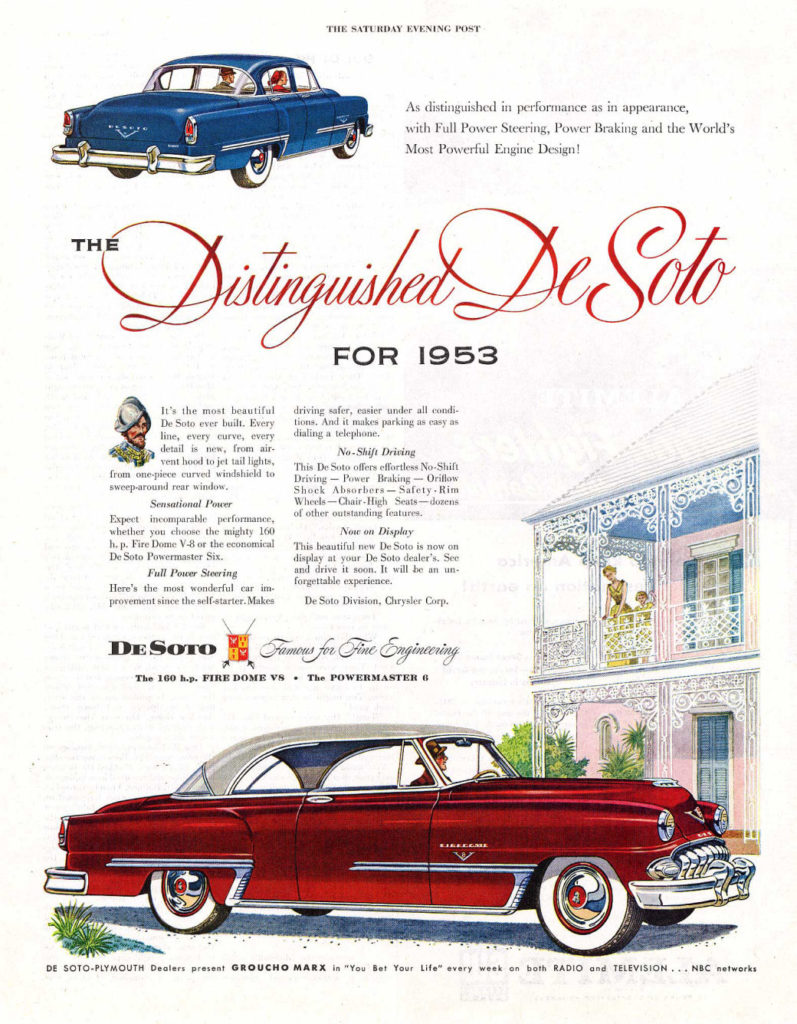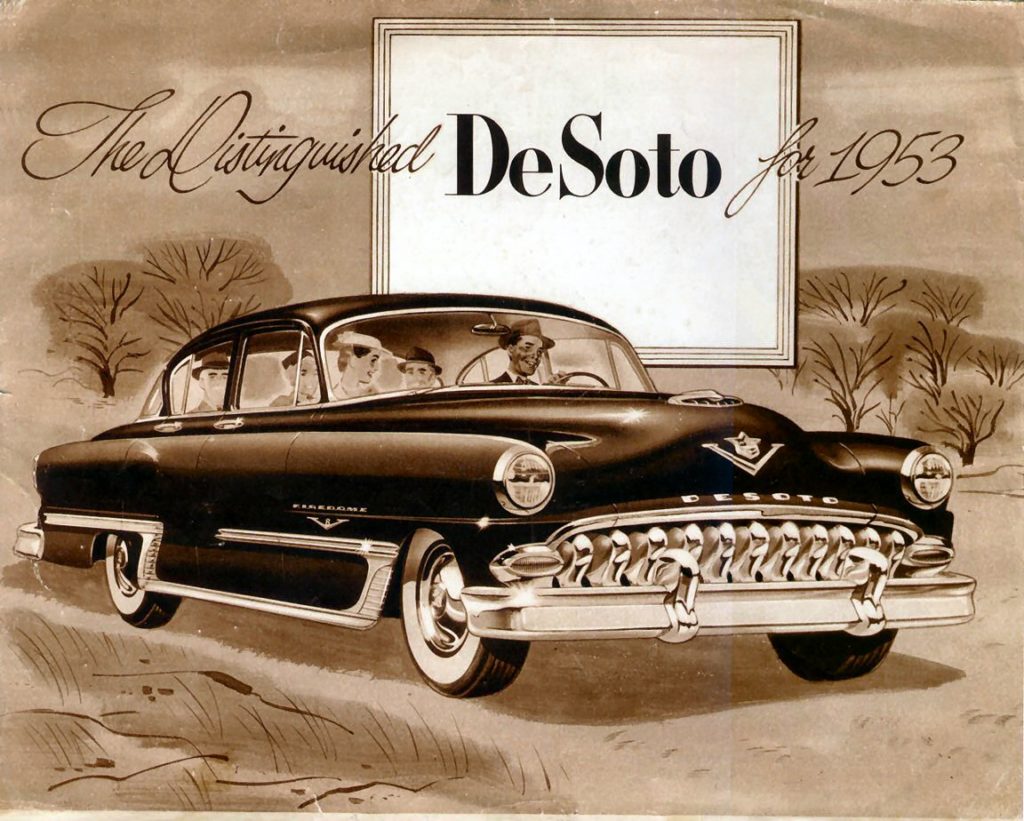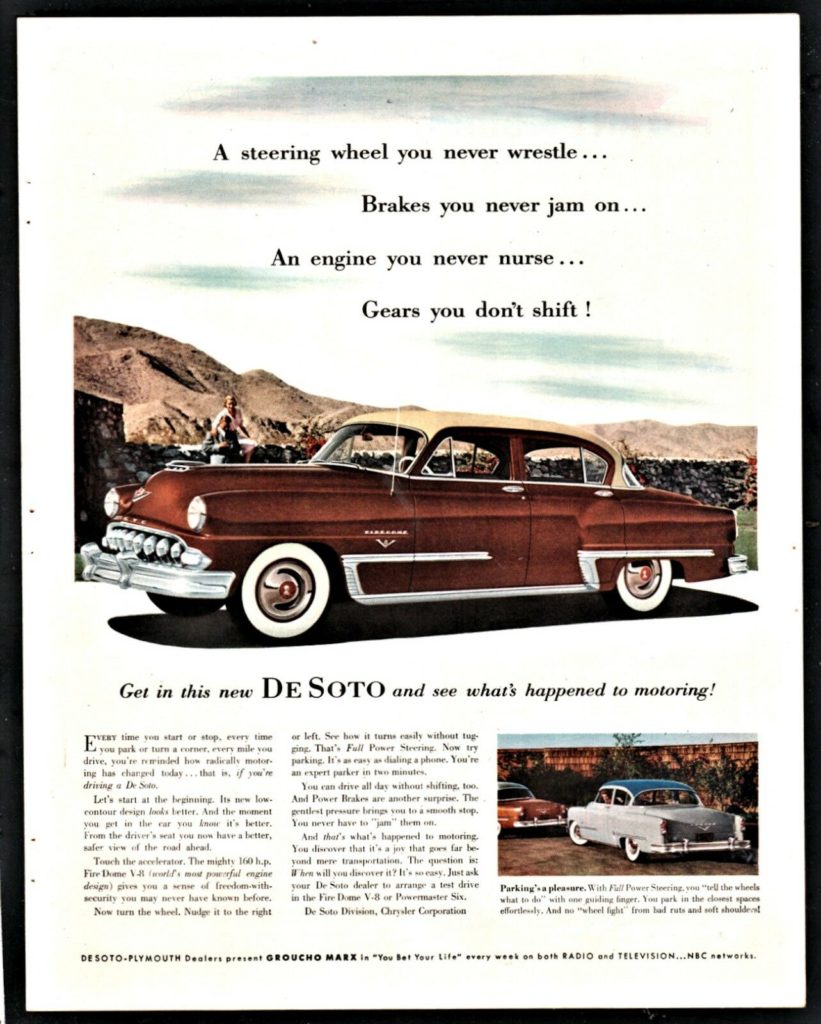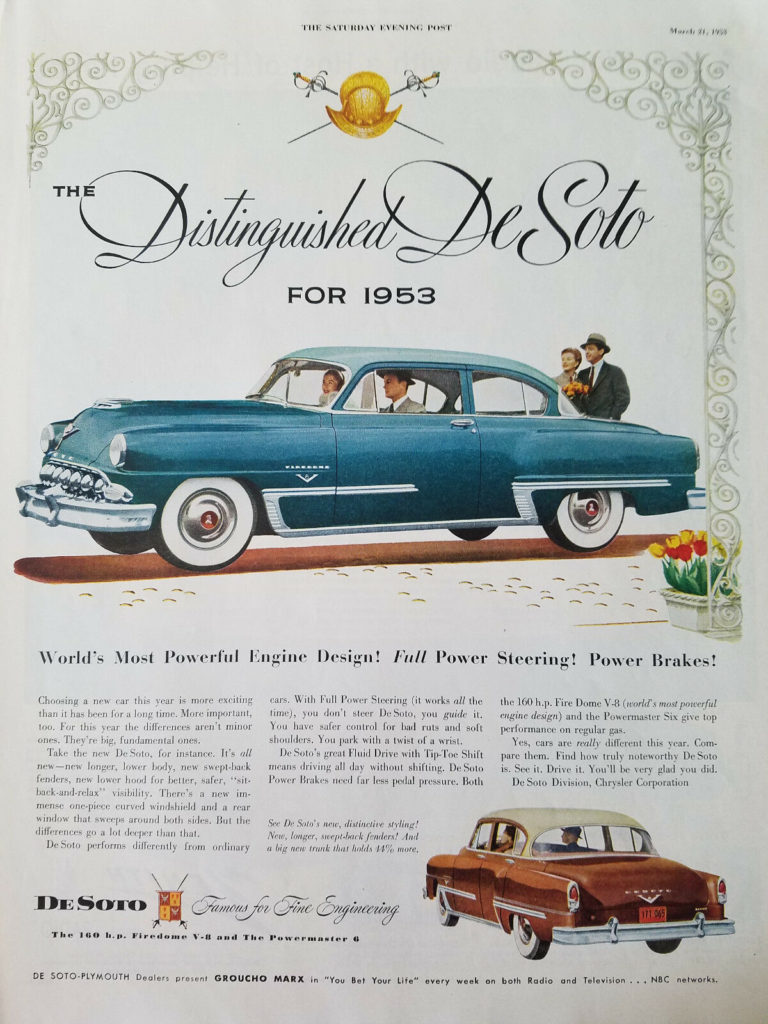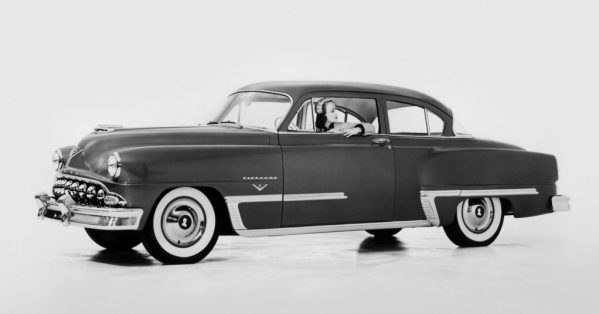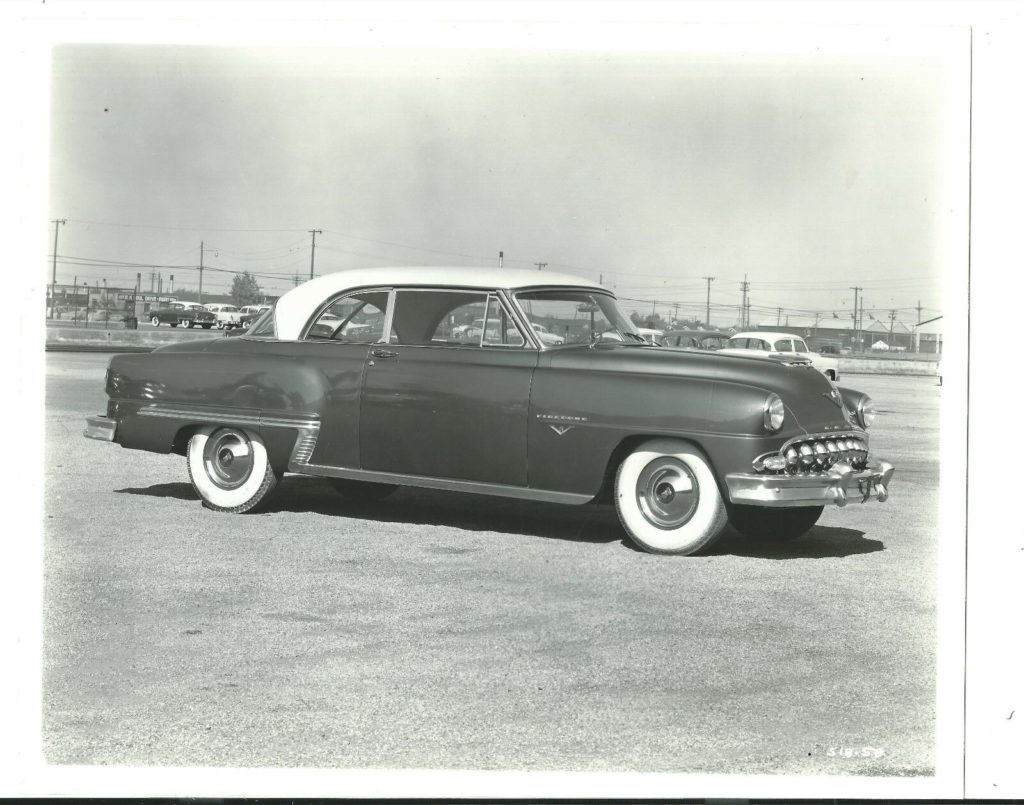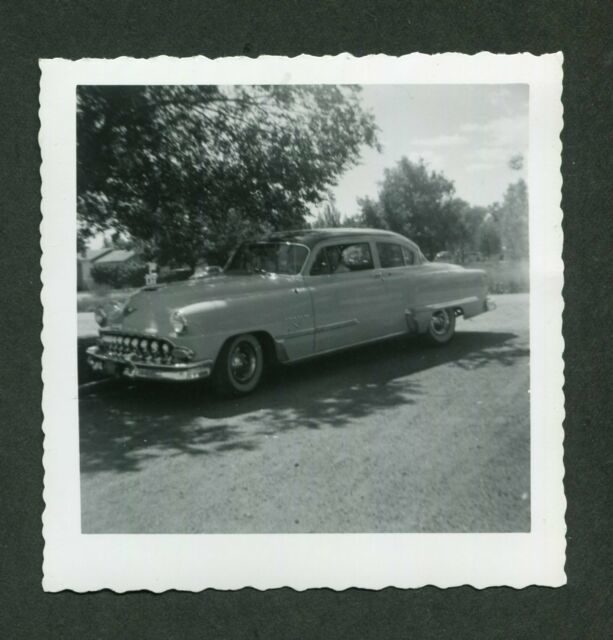1953
At first glance, it wouldn't appear as though much changed from the 1952 models. However, that was hardly true at all. Starting at the front, the toothy grill evolved from a 9-tooth to an 11-tooth grill and also integrated the parking lights into the ends. Moving around the sides saw an update to the profile. On the main body, the fender shape carried through all the way to the rear quarter continuously on all models except the wagons and 8-passenger sedans, which retained the 1952 sheet metal. The gas filler also moved with the sheet metal change from the side to the rear and moving up the car a bit saw an updated cowl and roofline, necessitated by the new one-piece curved windshield and rear window. This change, unlike the side sheet metal, did carry through to the wagons and 8-passenger sedans, though the Sportsman models still sported trim strips that divided the rear window into three sections. Also notable on the body was the updated Firedome Eight emblems. Whereas in 1952 it simply said "8" and left open the possibility that it was a straight 8, 1953 removed all doubt by putting "V" emblems on all sides of the car!
January 1953 saw the release of the brand new air conditioning option, though it was not installed on many cars that first year. Also new for 1953 was true wire spoke wheels, which would be available through the 1956 model year. While these things were new, the Tip-Toe shift transmission would be in it's last year as the fully-automatic Powerflite was set to replace it the following year. Tip-Toe transmission with Fluid Drive coupling, the 3-speed standard shift transmission, or overdrive unit could be paired with the S-18 Powermaster Six or S-16 Firedome V-8 models. Optional on the Firedome Eight model was Fluid-Torque Drive.
Powermaster Six engine: 251 c.i. 6 cylinder
Firedome Eight engine: 276 c.i. V-8 hemi
Wheelbase: 125.5 (standard, including wagon), 139.5 (8-passenger sedans)
Los Angeles Powermaster VIN Start: 62039001
Los Angeles Powermaster VIN End: 62042345
Detroit Powermaster VIN Start: 50266001
Detroit Powermaster VIN End: 50304981
Los Angeles Firedome VIN Start: 64008001
Los Angeles Firedome VIN End: 64015691
Detroit Firedome VIN Start: 55050001
Detroit Firedome VIN End: 55127622
Production Numbers
Powermaster Wagons Produced: 500
Powermaster 4-Door 6-Passenger Sedans Produced: 33,644
Powermaster 4-Door 8-Passenger Sedans Produced: 225
Powermaster Club Coupes Produced: 8,063
Powermaster Sportsmans Produced: 1,470
Firedome Wagons Produced: 1,100
Firedome 4-Door 6-Passenger Sedans Produced: 64,211
Firedome 4-Door 8-Passenger Sedans Produced: 200
Firedome Club Coupes Produced: 14,591
Firedome Sportsman 2-Door Hardtops Produced: 4,700
Firedome Convertibles Produced: 1,700
Source: The Plymouth and DeSoto Story by Don Butler
